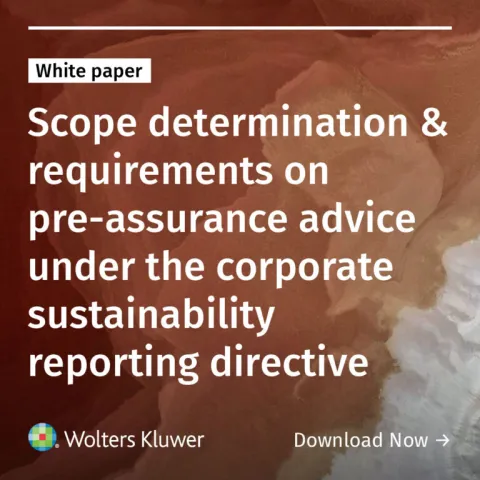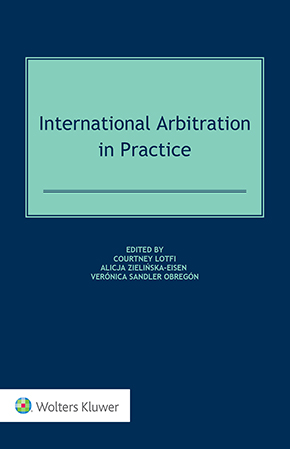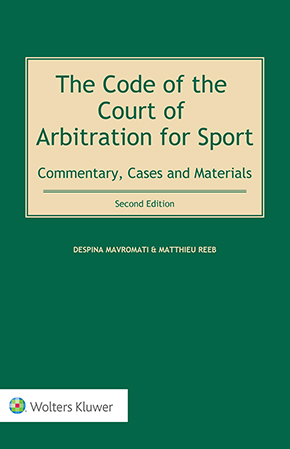Launch of the IBA Arb40 Guidance on Emergency Arbitration
November 20, 2025
Emergency arbitration is no longer the “new kid on the block.” Since its introduction in 1999 by the American Arbitration Association, emergency arbitration has been adopted and refined by regional and global arbitral institutions, becoming a standard procedural tool. In summary, emergency arbitration is a procedure that enables a party to an arbitration agreement to obtain urgent interim relief from an arbitrator before the arbitral tribunal is constituted, thereby avoiding the need to resort to national courts, where the dispute may end up in the public domain.
Whilst most arbitration practitioners are aware of emergency arbitration, not all will have had direct experience with the process. In addition, when practitioners face an emergency arbitration, whether as counsel or as an arbitrator, they often have limited time to research and analyse the applicable rules and practices. Further, many arbitrators start their careers with an appointment as an emergency arbitrator, which requires them to master not only the skills associated with being an arbitrator but also the peculiarities of emergency arbitration at the same time, often within a highly truncated timeframe.
Development of the Guide
In 2020, the IBA Arb40 Subcommittee (“IBA Arb40”), under the leadership of Anina Liebkind and Hamid Abdulkareem, decided to investigate the best way of assisting practitioners involved in an emergency arbitration, regardless of the institutional rules in question. To this end, IBA Arb40 established a working group (the “Working Group”) consisting of Sheila Ahuja, Nora Fredstie, Alipak Banerjee, and Tilman Niedermaier, who were later joined by Séréna Salem and Francisco Amallo.
The Working Group sought input from several institutions and experienced arbitration practitioners across regions and conducted a literature review to identify the key aspects of emergency arbitration and the elements of which any practitioner engaging in such proceeding should be aware. The Working Group quickly realised that the most useful output would be a set of practical guidelines on emergency arbitration—not a comprehensive analysis, but a succinct guide that could serve as a starting point for any practitioner facing an emergency arbitration.
The resulting guidance is designed to be a user-focused resource, offering practical insights and comparative perspectives for practitioners—particularly young arbitrators, who are likely to encounter emergency arbitrations in their careers. The guide aims to demystify the process, highlight key issues and trends, and provide actionable advice for both counsel and arbitrators. The guide, entitled “Emergency arbitration: A practical guide for young arbitration practitioners” (the “Guide”) was launched during the IBA Annual Conference 2025 under the leadership of Emilio Bettoni and Hyojung (Kelly) Shin.
Contents and Structure of the Guide
The Guide sets out the process of emergency arbitration from top to bottom including the following key topics.
The Commencement of an Emergency Arbitration
Emergency arbitration is now available under the rules of most major arbitral institutions. Emergency arbitration applies by default if parties have agreed to arbitrate under institutional rules that include emergency arbitration provisions (e.g., ICC, LCIA, SCC, SIAC, HKIAC), unless the parties have expressly opted out. Some rules, however, require an express agreement, or exclude emergency arbitration for investment disputes. As the Guide explains, emergency arbitration is based on consent. Accordingly, the Guide identifies situations where emergency arbitration may not apply, for example, where the arbitration agreement predates the institution’s introduction of emergency arbitration provisions.
The Guide also sets out how the jurisdiction of emergency arbitrators is determined. Emergency arbitrators usually conduct a prima facie assessment of their jurisdiction, focusing on whether they have the authority to hear the application. As the Guide notes, most institutional rules do not grant emergency arbitrators jurisdiction over third parties, and issues of joinder and consolidation are generally not addressed in emergency arbitration provisions.
The Guide also discusses the interplay between emergency arbitration provisions and multi-tier dispute resolution clauses, i.e., clauses which require alternative dispute resolution prior to arbitration.
As for the appointment of an emergency arbitrator, the Guide outlines the timeline and process, and explains how a balance is struck between the need for expeditiousness, the selection of a competent arbitrator, and the parties' right to challenge the arbitrator if necessary.
Emergency arbitrators are typically appointed within one to three days of the emergency arbitration application. Challenges must be filed promptly—usually within one to three days of the appointment—and the emergency arbitration proceedings may continue while a challenge is pending.
Conduct of Proceedings
The Guide explains that emergency arbitrators have broad procedural discretion. They may set the procedural timetable, decide on the number and format of submissions, and determine whether a hearing is necessary. The Guide also details how this broad discretion affects each stage of the arbitration process and the limitations placed on that discretion.
The Guide explains the factors emergency arbitrators usually consider—in various combinations—when deciding whether to grant relief, including urgency, risk of irreparable harm, likelihood of success on the merits, proportionality (or balance of interest), necessity, and the burden of proof.
As to the form of relief available, emergency arbitrators can grant any interim measure that a tribunal could order, subject to the limitations of the applicable national law. Common forms of relief include maintaining or restoring the status quo, preventing imminent harm, preserving assets or evidence, and ordering specific performance or security.
Status and Enforcement of Emergency Relief
The enforceability of emergency orders or awards varies by jurisdiction, and the Guide provides further detail on some of these differences. For example, some countries recognise and enforce emergency arbitration decisions as arbitral awards or interim measures, while others do not. The legal status of emergency arbitration decisions—whether they are “orders” or “awards” from both or either a nomenclative or substantive perspective—can affect their enforceability under the New York Convention. Most institutional rules provide that emergency arbitration decisions are binding on the parties but do not have res judicata effect in the main arbitration proceedings.
Emergency Arbitration in Investment Treaty Disputes
The Guide examines how emergency arbitration applies in the context of investment treaty disputes. Many institutional rules governing investment treaty disputes do not include provisions for emergency arbitration. The Guide highlights the key considerations relevant to the use of emergency arbitration in such disputes.
Practical Guidance for Practitioners
We set out below some practical tips for practitioners and where to find more detail in the Guide.
1. Assess the availability of emergency arbitration early. Check whether the arbitration agreement and applicable rules provide for emergency arbitration (Section II, A, ¶¶ 10–13). Verify whether the parties have opted in or out of emergency arbitration, and whether the agreement refers to the rules in force at the time of the commencement of the arbitration (Section II, A, ¶ 11).
2. Act promptly. Emergency arbitration is designed to be used in times of urgency and is therefore fast-paced (Section III, A1, ¶¶ 39–63). Timetables are typically short, so any objections to the appointment or proposed schedule must be filed without delay. Be ready to draft concise, focused applications (Section III, A1, ¶52). Prepare in advance, where possible, for upcoming procedural steps and potential challenges. But be aware that delays in filing may adversely affect the tribunal’s finding on urgency.
3. Understand jurisdictional limits. Emergency arbitration is generally available only to signatories of the arbitration agreement (Section II, B2, ¶¶ 18–20). Relief can only be sought against third parties in limited circumstances (Section II, B2, ¶ 21).
4. Navigate multi-tier clauses. If the contract requires negotiation or mediation before arbitration, assess whether these pre-arbitration steps preclude the use of emergency arbitration (Section II, C2, ¶¶ 26–27).
5. Manage costs and recovery. Be aware of the upfront costs that the applicant must bear, including the emergency arbitrator’s fees and administrative expenses (Section III, A3, ¶¶ 70–72).
6. Focus on standards for granting relief. Most emergency arbitration rules require the application to be urgent or an emergency (Section III, B2, ¶ 77). In practice, emergency arbitrators also consider criteria such as irreparable harm, likelihood of success on the merits, proportionality, and necessity. Carefully consider which standards are relevant to your case (Section III, B2, ¶ 80).
7. Plan for enforcement. Consider the enforceability of emergency arbitration decisions in relevant jurisdictions, as this is determined by local laws. Generally, an emergency decision does not have res judicata effect in arbitration proceedings (Section IV, A3, ¶ 105).
8. Consider settlement opportunities. Emergency arbitration proceedings often prompt parties to settle by revealing the strengths and weaknesses of their cases (Section IV, D, ¶ 117). Use the process to clarify each side’s strengths and weaknesses and facilitate negotiation.
9. Coordinate with main proceedings. Emergency arbitration decisions do not bind the tribunal in the main arbitration (Section IV, E, ¶ 118). Prepare to revisit issues and present fresh evidence as the main proceedings unfold.
10. Stay updated. Emergency arbitration practices and rules have evolved over time. It is helpful to monitor developments in institutional rules, national laws, and case law to ensure your approach remains current.
Conclusion
Emergency arbitration is a dynamic and essential tool in modern international arbitration. For young practitioners, mastering emergency arbitration means understanding its procedural nuances, strategic considerations, and enforcement challenges. By approaching emergency arbitration with pragmatism, speed, and fairness, practitioners can help clients secure urgent relief while upholding the integrity of the arbitral process. The Guide is designed to help practitioners hit the ground running when faced with an emergency arbitration.










